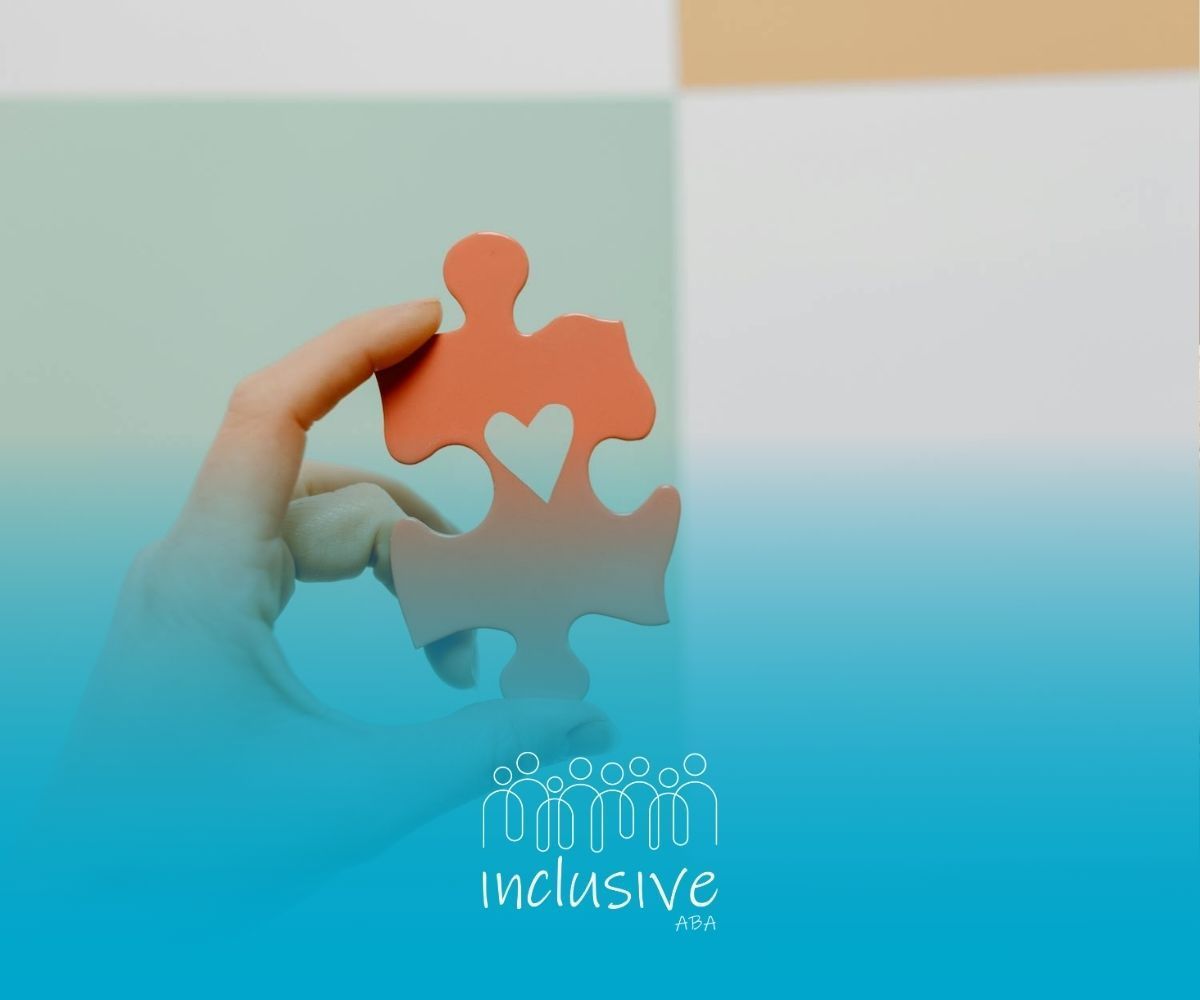The Vital Role of Routine in Autism Care
For individuals with autism spectrum disorder (ASD), establishing a structured daily routine is paramount to their well-being and development. The importance of routine stems from the sense of predictability and stability it offers, which can significantly ease anxiety and promote emotional health. This blog explores the multifaceted benefits of integrating routine into autism care and provides practical guidance for creating effective schedules.
Understanding the Importance of Routine for Autism
The autistic brain thrives on patterns and predictability. A consistent daily routine provides a framework that reduces uncertainty and anxiety. This is crucial because unexpected changes or unfamiliar situations can trigger stress and discomfort in autistic individuals, sometimes leading to challenging behaviors. Routines offer a sense of control and understanding within their environment.
Moreover, routines act as a visual guide for autistic individuals, helping them anticipate upcoming events and transition smoothly between activities. This predictability enables them to navigate their day with reduced anxiety and a heightened sense of independence.
Exploring the Psychological Benefits of Structured Days
Structured days contribute significantly to the emotional health of autistic individuals. When a child or adult knows what to expect, their stress levels are naturally lower. They can anticipate transitions and prepare themselves mentally, reducing the likelihood of meltdowns or other problem behaviors. This increased sense of stability can lead to greater confidence and independence in managing daily life.
Furthermore, routines can decrease the potential for power struggles between caregivers and autistic individuals. When expectations are clear and consistent, there are fewer opportunities for misunderstandings or disagreements. This harmonious environment fosters a stronger caregiver-child bond and promotes a more positive and supportive atmosphere.
Visual schedules, a key component of structured routines, provide a clear visual representation of the day's plan. This is particularly beneficial for individuals who are visual learners, a common trait among those with ASD. Such visual aids minimize confusion and increase understanding, making the routine more accessible and manageable.
How Consistency Improves Learning and Behavior
A fundamental principle of behavior analysis is that consistency is key to shaping desired behaviors. When routines are maintained consistently, autistic individuals are better equipped to learn new skills and apply them in different settings. This consistency creates an environment conducive to learning and promotes the generalization of skills.
Repetition of activities within the routine reinforces learning and helps solidify new behaviors. Over time, these actions become ingrained, contributing to increased independence and reduced reliance on prompting from caregivers. The sense of accomplishment derived from mastering these skills further enhances self-esteem and motivation.
Moreover, a consistent routine provides a framework for incorporating therapeutic interventions. For example, specific components of applied behavior analysis (ABA) therapy can be seamlessly integrated into daily activities, promoting skill acquisition and addressing challenging behaviors in a natural and practical manner.
Establishing Effective Routines for Autistic Individuals
When creating routines, remember that individual needs should be prioritized. A successful routine caters to the specific strengths, challenges, and preferences of the individual it's designed for. It's a collaborative process that involves observation, understanding, and ongoing adjustments to ensure optimal effectiveness.
Flexibility is also key. While routines thrive on consistency, there needs to be room for adjustments based on the individual’s progress and changing needs. It's about finding a balance between predictability and the ability to adapt to new experiences.
Key Components of a Successful Routine
A successful routine incorporates a balance of daily activities, ensuring that essential tasks are addressed while leaving space for enjoyable activities and downtime. The routine should encompass various aspects of daily life, including self-care, meals, learning activities, social interactions, and preferred activities.
For many individuals with autism, a visual schedule is a cornerstone of a successful routine. This can be as simple as a series of pictures depicting different activities or as elaborate as a personalized chart with detailed information about each task. Visual supports help to minimize confusion, increase understanding, and promote independent participation in the routine.
Involving the individual in the creation of their routine is beneficial. Allowing them to voice their preferences and contribute to the schedule fosters a sense of ownership and encourages cooperation.
Customizing Routines to Fit Individual Needs
Consider the unique interests and sensory sensitivities of the individual when tailoring routines. Incorporating preferred activities can act as positive reinforcement, motivating them to complete less desirable tasks. Conversely, be mindful of sensory sensitivities and try to create a routine that minimizes potential triggers.
Customization also involves finding the right balance between structure and flexibility. While consistency is essential, excessive rigidity can hinder the development of adaptability. Allowing for some degree of flexibility within the routine can help the individual adjust to unexpected changes more easily.
Visual supports can be customized to match the individual's communication style and preferences. For some, simple pictures may suffice, while others might benefit from more detailed written instructions or social stories.
Overcoming Challenges in Routine Implementation
Unexpected changes or disruptions in routine are inevitable. These disruptions can range from minor alterations in the schedule to major life events like moving to a new house or starting at a new school. Such events can be particularly challenging for individuals with autism, potentially leading to anxiety, discomfort, and problem behaviors.
When deviations from the routine occur, clear communication and patience are vital. Preparing the individual for upcoming changes as much as possible can ease the transition. Using visual aids, social stories, or simply talking through the change can provide a sense of predictability and reduce anxiety.
Addressing problem behavior that may arise from routine disruptions requires understanding and empathy. It's essential to identify the root cause of the behavior rather than simply reacting to it. Implementing effective treatment strategies, such as positive reinforcement for appropriate behavior and calmly redirecting challenging behavior, can support the individual through these challenging moments.
Practical Daily Routines for Autism Care
Implementing practical daily routines is crucial for individuals with autism. These routines provide structure, predictability, and a sense of security throughout their day. From morning rituals to bedtime routines, each part of the day can be optimized to promote independence and well-being.
By incorporating autism-friendly strategies into each stage of the day, we can create an environment where individuals with autism can thrive and reach their full potential. These routines become a foundation upon which they can build life skills, develop healthy habits, and navigate their world with confidence.
Morning Routines to Start the Day Right
A well-structured morning routine sets a positive tone for the rest of the day. Starting with predictable steps like waking up, getting dressed, and having breakfast at designated times can minimize anxiety and promote a sense of control.
Consider incorporating preferred activities into the morning routine. Allowing for some time to engage in a favorite hobby or play a beloved game can act as positive reinforcement and motivate the individual to complete less desirable tasks readily.
Visual aids, such as a picture chart outlining the morning sequence, can be beneficial, especially for young children. Timers can also be helpful in providing a visual representation of the time allotted for each activity.
After-School Activities and Downtime Planning
The transition from school to home can be challenging for some autistic children. Establishing a predictable after-school routine can create a sense of stability and ease the transition. This routine might include designated times for snacks, homework, and relaxation activities.
Incorporating opportunities for social interaction can be beneficial. Encouraging participation in clubs, sports, or playdates, even if for shorter durations, can support the development of social skills.
Downtime is equally important. Providing adequate time for the individual to unwind and engage in their preferred hobbies promotes relaxation and reduces the likelihood of sensory overload. Designate a quiet space where they can retreat when feeling overwhelmed.
Bedtime Routines for Better Sleep
A consistent bedtime routine is essential for promoting restful sleep in autistic individuals. By establishing a calming and predictable sequence of activities leading up to bedtime, caregivers can help regulate sleep patterns and reduce sleep-related challenges, which are common in individuals with ASD.
A soothing bedtime routine might include a warm bath, reading a favorite bedtime story, or engaging in quiet conversation. Maintaining a dimly lit and quiet environment can further enhance relaxation and prepare the body for sleep.
Consistency is key when it comes to bedtime routines. Sticking to the same sequence of activities and maintaining a regular sleep schedule, even on weekends, can significantly improve sleep quality and promote overall well-being.
The Impact of Routine Disruptions and How to Manage Them
Despite our best efforts, disruptions to established routines are a part of life. These disruptions can range from minor changes in schedule to significant life events, like holidays, travel, or a new school year. For individuals with autism, these deviations can be particularly unsettling, potentially leading to increased anxiety and challenging behaviors.
It's crucial to remember that handling these situations with understanding and flexibility is key. By acknowledging the potential impact of these changes and equipping ourselves with strategies to manage them effectively, we can minimize stress and support autistic individuals in navigating these disruptions successfully.
Common Causes of Disruption in Routines
Disruptions in routine can stem from various factors. While some disruptions are planned, like holidays or school breaks, others may arise unexpectedly, such as illness, changes in caregivers, or travel. Each type of disruption brings its own set of challenges and requires careful consideration to minimize its impact.
One common cause of disruption is the change in a daily schedule. This could be due to school holidays, a break from work, or even just a change in the daily commute. These alterations can be disorienting for individuals who rely on predictability, potentially causing anxiety and discomfort.
Unexpected events, such as illness or last-minute changes in plans, can also throw a wrench into established routines. These disruptions can be particularly challenging as they often involve adjustments to familiar environments or routines without prior warning, making it harder for individuals with autism to process and adapt.
Strategies to Handle Unexpected Changes
When unexpected changes occur, clear communication is paramount. Explain the change to the individual in a calm and reassuring manner, providing as much information as possible about what to expect. Visual aids can be particularly helpful in illustrating the change and its implications.
Maintaining a sense of structure amidst the disruption can provide comfort. If possible, try to keep some elements of the routine consistent. For instance, if a change in mealtime is unavoidable, try to maintain the same mealtime sequence or offer familiar food choices.
Flexibility is crucial in these situations. While adhering to the routine is beneficial, being open to making modifications based on the individual's needs will be essential in navigating unexpected changes successfully.
Preparing for Transitions and New Environments
Transitions, such as starting a new school, moving to a new house, or attending social gatherings, can be particularly challenging for individuals with autism. However, with careful planning and preparation, these transitions can be made smoother and less daunting.
One helpful strategy is to introduce the new environment or experience gradually. If possible, visit the new school or location several times before the actual transition. This allows the individual to familiarize themselves with the surroundings and reduce anxiety associated with the unknown.
Social stories are another valuable tool for preparing for transitions. These visual narratives provide a step-by-step explanation of what to expect in the new situation, helping to reduce anxiety and promote understanding. Involving the individual in creating the social story can further increase their engagement and sense of control.
Conclusion
In conclusion, taking care of your mental health is essential for overall well-being and quality of life. By incorporating simple yet effective tips like maintaining a healthy sleeping routine, being mindful of your consumption, engaging in therapeutic activities, and fostering a positive mindset, you can significantly improve your mental health. Remember, self-care is not selfish; it is necessary for leading a fulfilling and balanced life. Start prioritizing your mental health today and watch how it positively impacts every aspect of your life.
At Inclusive ABA, serving families in Nevada, Nebraska, and Colorado, we deeply understand the vital role that routine plays in providing comfort, reducing anxiety, and fostering predictability for individuals with autism. This article highlights the importance of structured environments and consistent schedules in supporting their well-being and development. Our experienced team at Inclusive ABA incorporates the power of routine into our individualized ABA therapy programs, creating predictable frameworks that promote learning, independence, and a sense of security. We collaborate closely with families in Nevada, Nebraska, and Colorado to establish effective routines tailored to their specific needs, empowering both children and caregivers to navigate daily life with greater ease and confidence. Inclusive ABA is committed to providing comprehensive support that recognizes and leverages the benefits of routine in autism care.
Frequently Asked Questions
What are some initial steps to establish a routine for an autistic child?
Initial steps include consulting with an ABA therapist to assess the child's needs and preferences. Start with a simple, visual schedule incorporating preferred activities and gradually introduce new tasks. Patience and positive reinforcement are key during this process.
How frequently should routines be adjusted for autistic individuals?
The adjust frequency for routines depends on individual needs and progress. Regular review of the established routine with an ABA therapist can help determine the need for modifications. Avoid unnecessary changes, as consistency is vital.
Can too rigid a routine be harmful for autism care?
While routine is essential, excessive rigidity can increase stress levels and hinder flexibility. It's crucial to find a balance between structure and flexibility, allowing for occasional deviations to prevent the development of compulsive behaviors.













